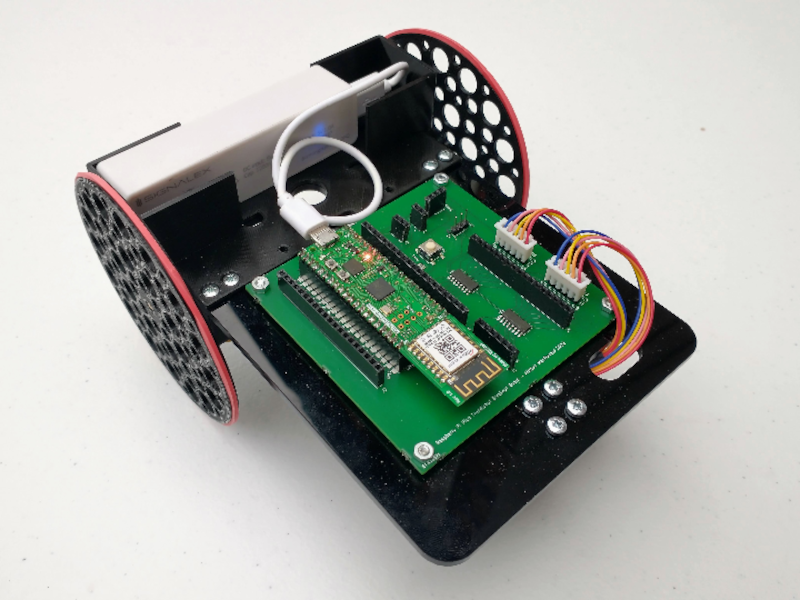When looking for electronics projects to use in educational settings, there is no shortage of simple, lightweight, and easily-accessible systems to choose from. From robotic arms, drones, walking robots, and wheeled robots, there is a vast array of options. But as technology marches on, the robotics platforms need to keep up as well. This turtle-style wheeled robot called the Trundlebot uses the latest in affordable microcontrollers on a relatively simple, expandable platform for the most up-to-date educational experience.
The robot is built around a Raspberry Pi Pico, with two low-cost stepper motors to drive the wheeled platform. The chassis can be built out of any material that can be cut in a laser cutter, but for anyone without this sort of tool it is also fairly easy to cut the shapes out by hand. The robot’s functionality can be controlled through Python code, and it is compatible with the WizFi360-EVB-Pico which allows it to be remote controlled through a web application. The web interface allows easy programming of commands for the Trundlebot, including a drag-and-drop feature for controlling the robot.
With all of these features, wireless connectivity, and a modern microcontroller at the core, it is an excellent platform for educational robotics. From here it wouldn’t be too hard to develop line-follower robots, obstacle-avoiding robots, or maze-solving robots. Other components can easily be installed to facilitate these designs as well. If you’re looking for a different style robot, although not expressly for educational purposes this robotic arm can be produced for under $60.

















It’s the BoEbot all over again.
That’s because it’s equipped with a WizFi360-EVB-Pico, which is pin-compatible with the Pico. It’s designed to work with either.
It’s hard to find an entry level electronics kit or toy for kids, that doesn’t involve a programmable microcontroller. Used to be you could start kids with batteries, motors, switches, lights, and maybe some relays. Now it seems you have to start with programming. Even Lego Technic has gone that way.
Lego has actually abandoned Mindstorms completely for consumers now!
I had a kit when I was a kid ~25 years ago that was all basic stuff like that. Might have had a 555 or something because you could make a piezo buzzer make different tones. I loved the thing. It was all just clipping wires into different components with zero programming.
Kids are learning scratch in grade 3 now days.
There a plenty of electronics kits for kids without mcu’s on for instance Aliexpress
I´d like to see a WLAN logo turtle with a simple web interface targeted to children who do not master reading and writing yet …
I guess because it’s not exactly true. The project is built around a Pi Pico, which is what the article says, and the picture shows a WizFi360-EVB-Pico, a Pi Pico compatible, which the article also says.
That’s not a robot.
A Robot is an Appliance operated by a computer.
That’s too small to qualify as an appliance.
The word you’re searching for is toy.